I am using protocol buffer in .net http://code.google.com/p/protobuf-net/.
I installed the visual studio support version, which I can just write proto file in project and it generates csharp class files automatically.
A lot of times that I need to dump the files into xml(or another text format if available) file. I found that there is a method Serializer.Serialize() which takes an XmlWriter parameter. I tried to use it but it complains that the protobuf type I defined must be convertible to system.Xml.Serialization.IXmlSerializable.
In my case, what I should do in order for my type can be convertible to System.Xml.Serialization.IXmlSerializable? I don't want to change the cs file directly since it is generated on the fly when the proto file is changed.
thanks.
